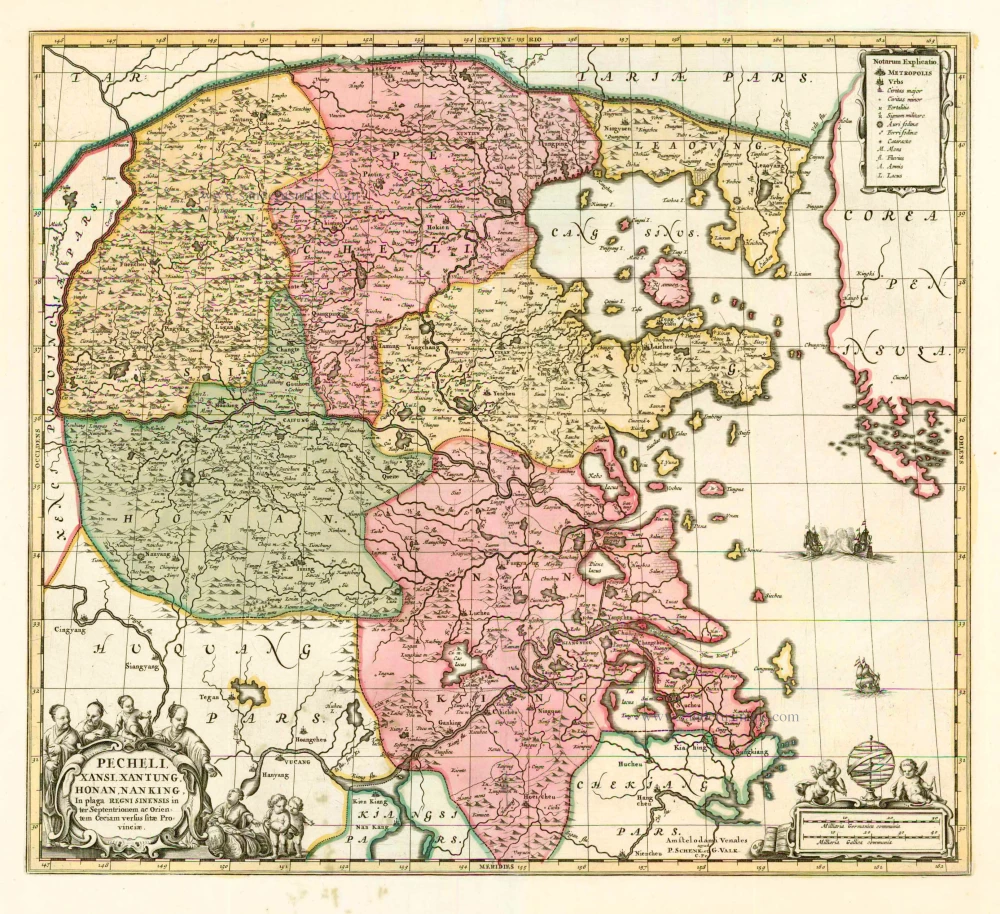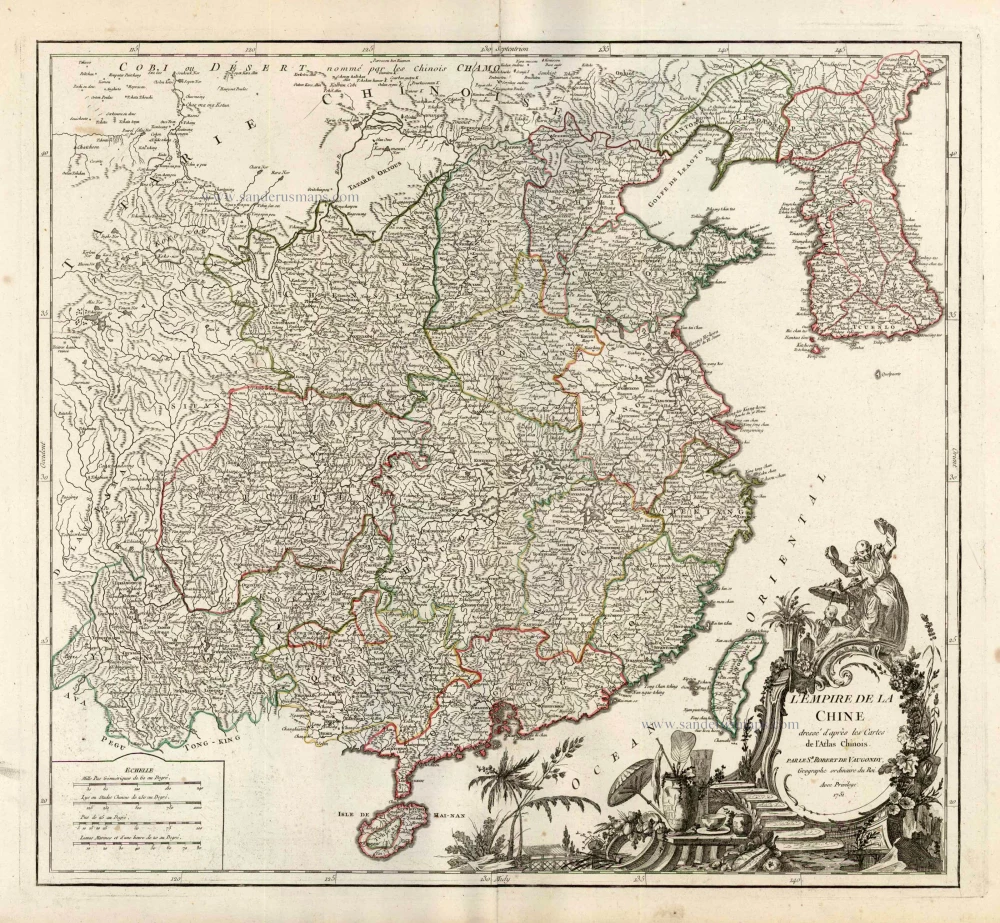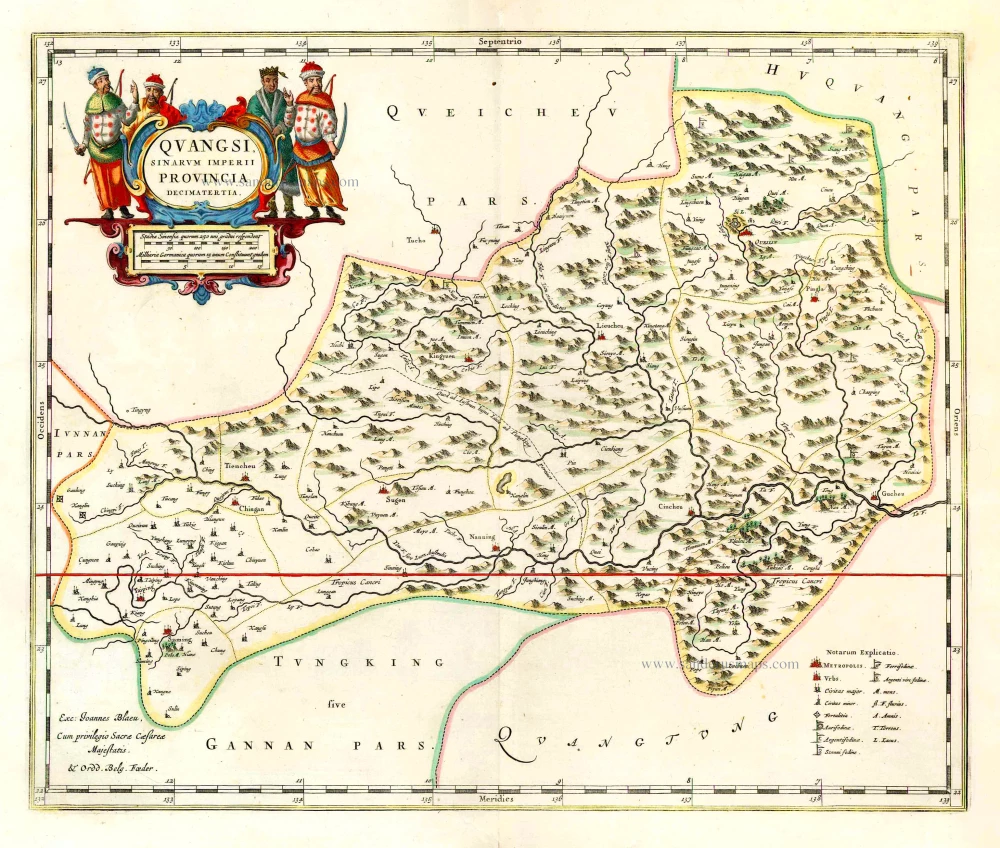Old antique plan of Hangzhou (China) by M. Merian. 1638
Matthäus Merian the Elder (1593-1650)
Matthäus Merian, the leading German illustrator of the 17th century, was born in Basel in 1593. He learned the art of copperplate engraving in Zurich and subsequently worked and studied in Strasbourg, Nancy, Paris, and the Low Countries. In 1618 he went to Frankfurt, wherein in 1618, he married the eldest daughter of J.T. de Bry, publisher and engraver. After de Bry died in 1623, he took over his business. De Bry’s business remained in Merian’s family until 1726, when a fire destroyed it. In 1635 he began the series Theatrum Europaeum. Between 1642 and 1688, he published Martin Zeiller’s Topographia Germaniae, with more than 2,000 plates etched and engraved by himself and his sons Matthäus and Caspar. He also took over and completed the later parts and editions of the Grand Voyages and Petits Voyages, initially started by de Bry in 1590. Matthäus Merian died after in 1650 in Bad Schwalbach near Wiesbaden.
Xuntien alias Quinzay.
Item Number: 26015 Authenticity Guarantee
Category: Antique maps > Asia > China
Old, antique bird's-eye view plan of Hangzhou (China), by M. Merian.
Date of the first edition: 1638
Date of this map: 1638
Copper engraving, printed on paper.
Size (not including margins): 18 x 25.5cm (7 x 9.9 inches)
Verso: Blank
Condition: Fine dark impression, excellent.
Condition Rating: A+
References: Fauser, #5441.
From: Gottfried J.L. - Merian M. Newe Archontologia Cosmica, ... Frankfurt, W. Hoffmans, 1638.
Hangshou is one of the seven ancient capitals in China. Quinzay is a corruption of the Chines King-sze, meaning 'capital' or 'great city'.
The plan is based on the account given by Marco Polo.
Matthäus Merian the Elder (1593-1650)
Matthäus Merian, the leading German illustrator of the 17th century, was born in Basel in 1593. He learned the art of copperplate engraving in Zurich and subsequently worked and studied in Strasbourg, Nancy, Paris, and the Low Countries. In 1618 he went to Frankfurt, wherein in 1618, he married the eldest daughter of J.T. de Bry, publisher and engraver. After de Bry died in 1623, he took over his business. De Bry’s business remained in Merian’s family until 1726, when a fire destroyed it. In 1635 he began the series Theatrum Europaeum. Between 1642 and 1688, he published Martin Zeiller’s Topographia Germaniae, with more than 2,000 plates etched and engraved by himself and his sons Matthäus and Caspar. He also took over and completed the later parts and editions of the Grand Voyages and Petits Voyages, initially started by de Bry in 1590. Matthäus Merian died after in 1650 in Bad Schwalbach near Wiesbaden.









